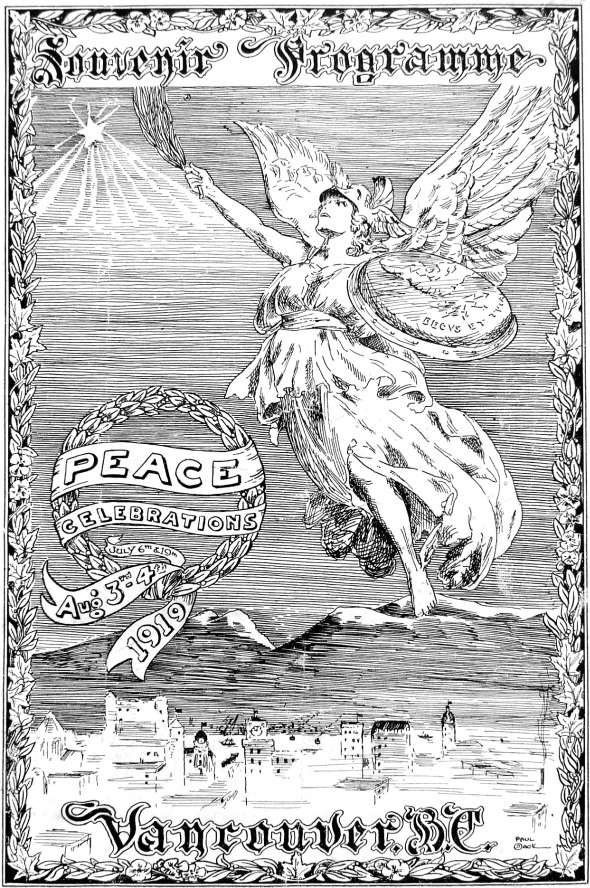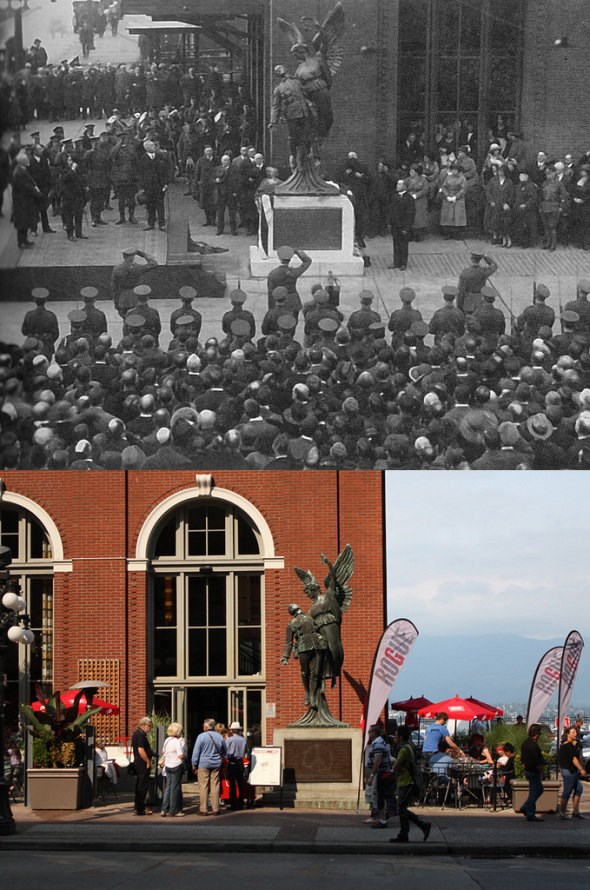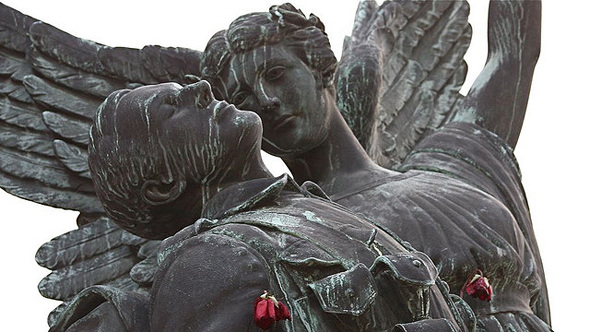
In honour of Remembrance Day, I present to you a Vancouver Peace Celebration souvenir program with cover illustration by Paul Page. This program was printed very shortly after the Treaty of Versailles was signed (June 28, 1919), though fighting in WWI ceased the year prior at 11 am on November 11, 1918, when Germany signed the Armistice of Compiègne.
The fact that there is not just one but four dates printed on this program seems to convey a great desire to celebrate the end of the war. These dates were July 6 & 19 and August 3-4, 1919. You might recall that WWI began with the assassination of Archduke Franz Ferdinand of Austria on June 28, 1914; August 3, 1914 was the day that Germany declared war on France and Belgium, and August 4, 1914 was the day that Britain declared war on Germany. November 11 was specifically dedicated as Remembrance Day by King George V on November 7, 1919.
The winged angel descending from heaven in this illustration might remind you of the bronze Angel of Victory by sculptor Coeur de Lion MacCarthy, as seen in front of Waterfront Station. However, this drawing came as early as two years before the monument. From the City of Vancouver public art registry:
A heritage monument, this bronze figurative sculpture depicts an angel carrying a dead soldier and commemorates those who lost their lives in World War I. This is one of three identical statues commissioned by the Canadian Pacific Railway in 1921 to honour their workers who answered the call of "king and country" and made the ultimate sacrifice. The others are in Winnipeg and Montreal. The angel originally held a full wreath in her upraised hand. After WW II, the dates of that war were also added to the plaque.Artist Statement: The artist won the CPR commission from a nation-wide competition.

Angel of Victory Monument, photo montage by Jeremy Hood via flickr
This classical bronze monument made the Heritage Vancouver Society's Top 10 Endangered List in 2009. I don't know if there are imminent plans to restore the angel's crown, though I think the monument in Winnipeg is also missing a crown. By contrast, the monument in Montreal is in remarkable condition, as it is stored indoors at Windsor Station.
While the angel in the sculpture carries a dead soldier, in the drawing, the angel carries a shield which reads, "DECVS ET TVTAMEN", or rather, "decus et tutamen". Again thanks to wikipedia, I can provide the Latin translation/explanation:
DECUS ET TUTAMEN is the motto of a British Army cavalry regiment, later artillery - The Essex Yeomanry, established in 1794. The motto was confirmed by King Edward VII in 1909 when it was added to a regimental guidon (or colours) presented to the Essex Yeomanry regiment by the King. The definitions are: "decus" - shield, virtue, honour or glory; and "tutamen" - defence or protection, thus the meaning is said to be: "shield and protection" or "honour and defence", etc.
Paul Page's distinctive signature with the circled P (much like the ® character) can be seen in the bottom right. His name doesn't ring any immediate bells with me, but I am very curious if anyone has ever seen this signature before.
Page has captured a city skyline with the following recognizable rooftops: Wesley Methodist Church at the corner of Burrard and Georgia (demolished), the Hotel Vancouver #2 (demolished), the Sinclair Centre, the Vancouver Block, the Dominion Building, and the Sun Tower, then known as the World Building.
The next time you walk past the Angel of Victory at Waterfront Station, pause for a moment to reflect on those who have made the ultimate sacrifice for peace.

Angel of Victory, photo by pkdon50 via flickr
I'd like to thank Neil Whaley for sharing the souvenir peace program, pkdon50 for the CC photo, and Jeremy Hood for permission to reprint his photo montage.


